Push-Up Exercise: Comprehensive Description and Analysis Report
VerifiedAdded on 2023/06/03
|8
|448
|354
Report
AI Summary
This report provides a detailed description and analysis of the push-up exercise. It begins with a basic overview of the exercise, highlighting its simplicity and whole-body benefits. The report then outlines the steps involved in performing a push-up and identifies the key muscles engaged, including the anterior deltoid, pectoralis major, triceps, and core muscles. Various push-up variations and their impact on muscle activation are discussed. The biomechanics of the push-up are also examined, including how hand position affects muscle engagement and the principles of levers in motion. References to relevant research are included to support the analysis.
1 out of 8
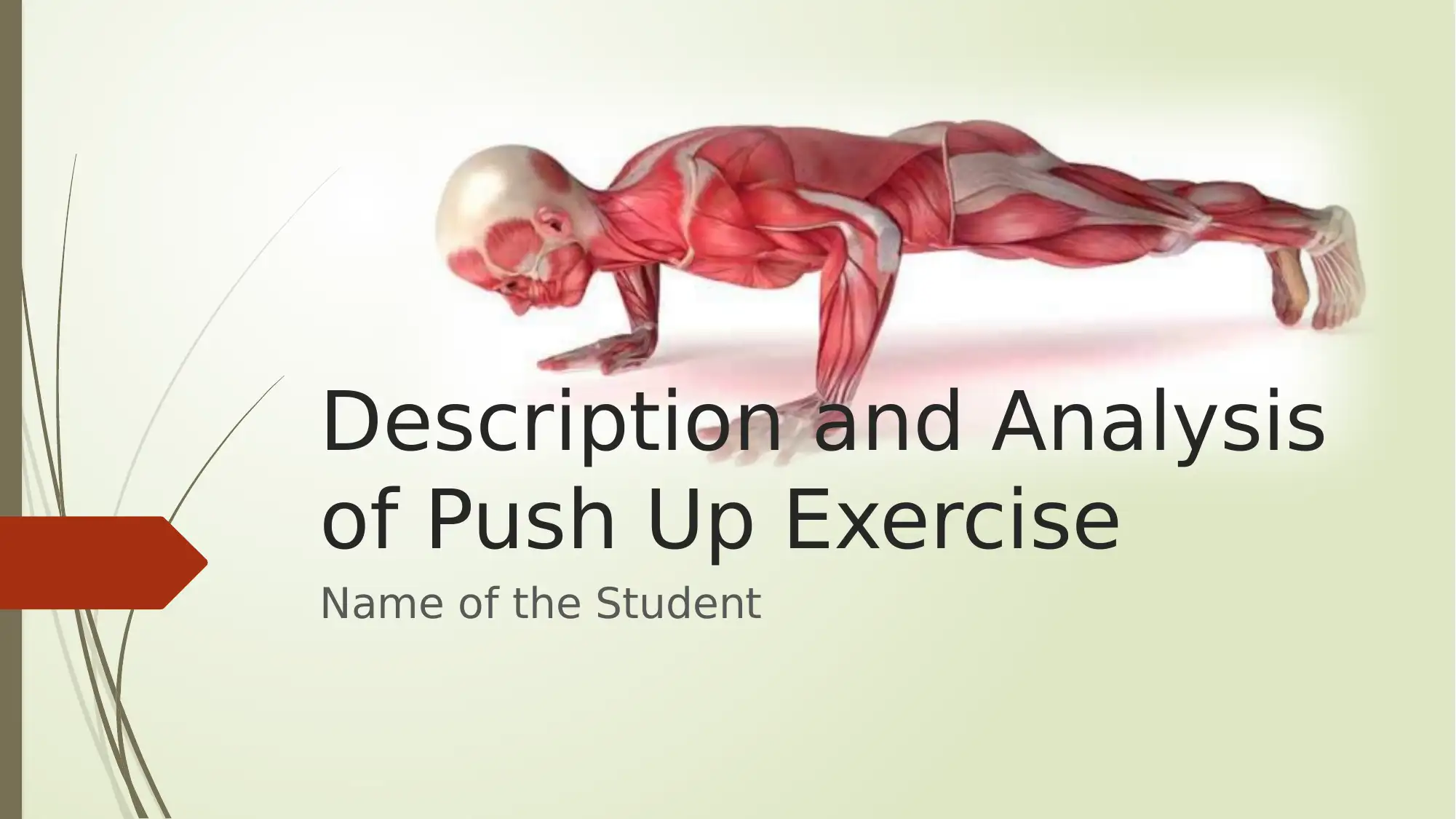
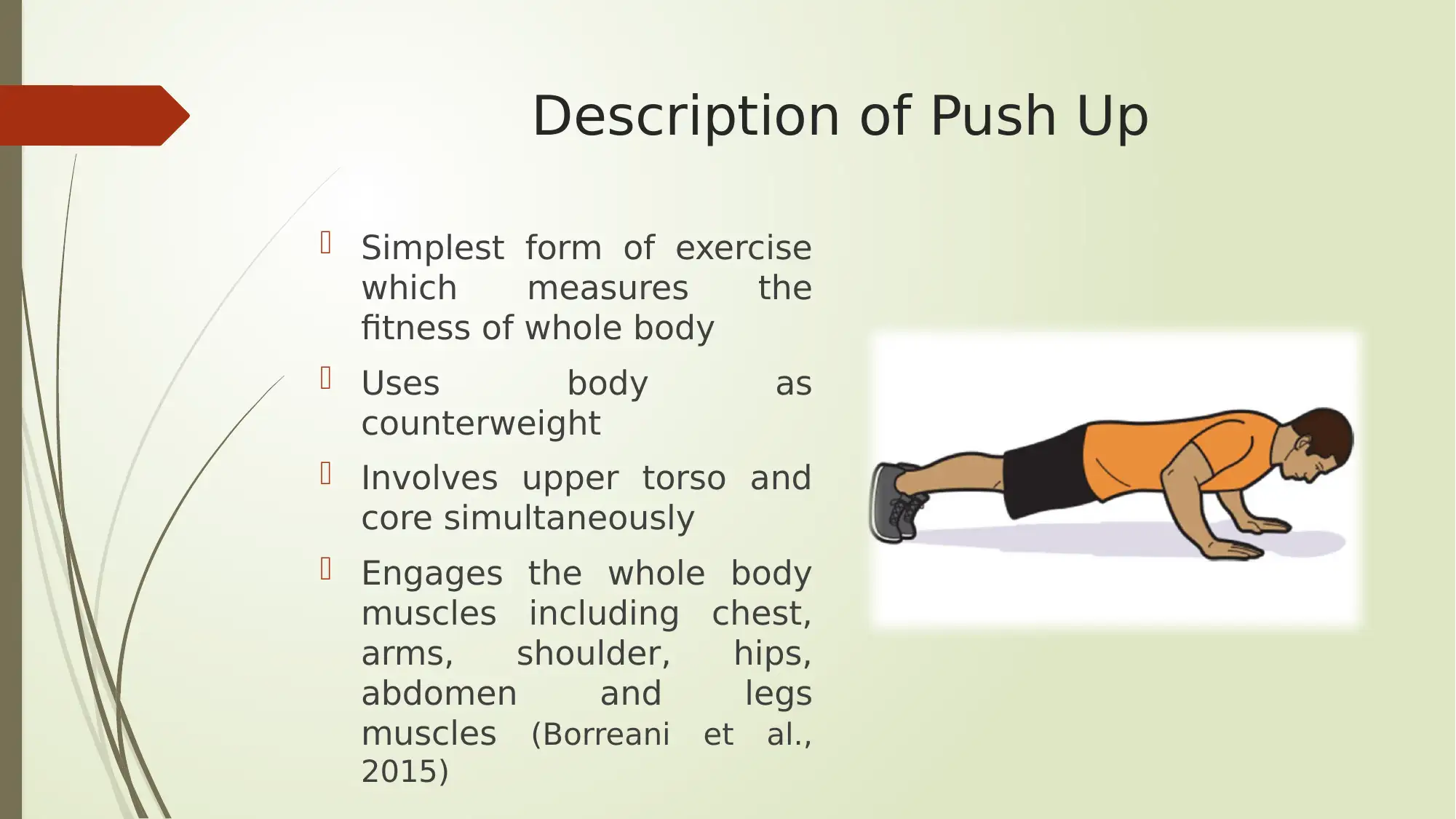
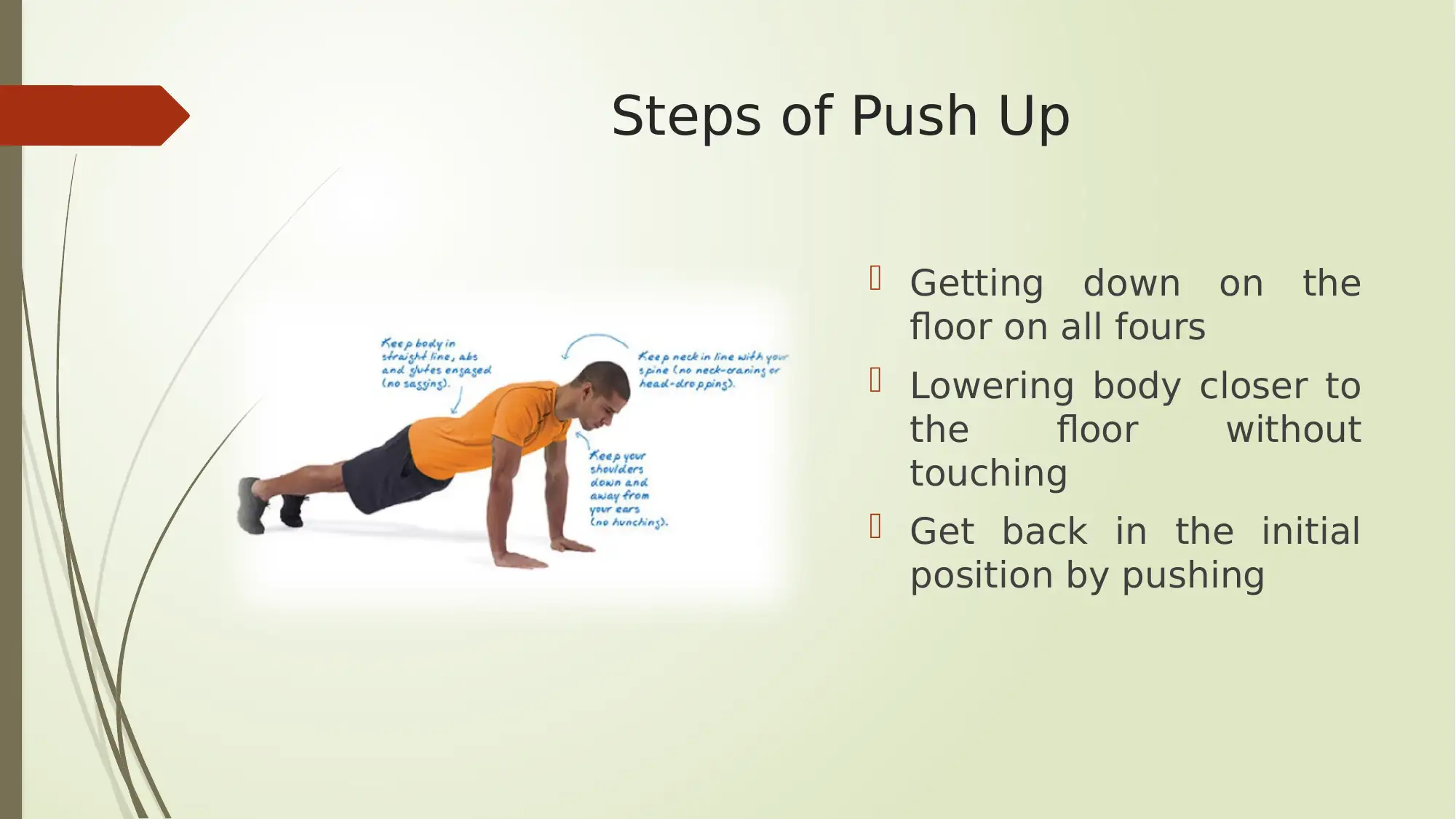

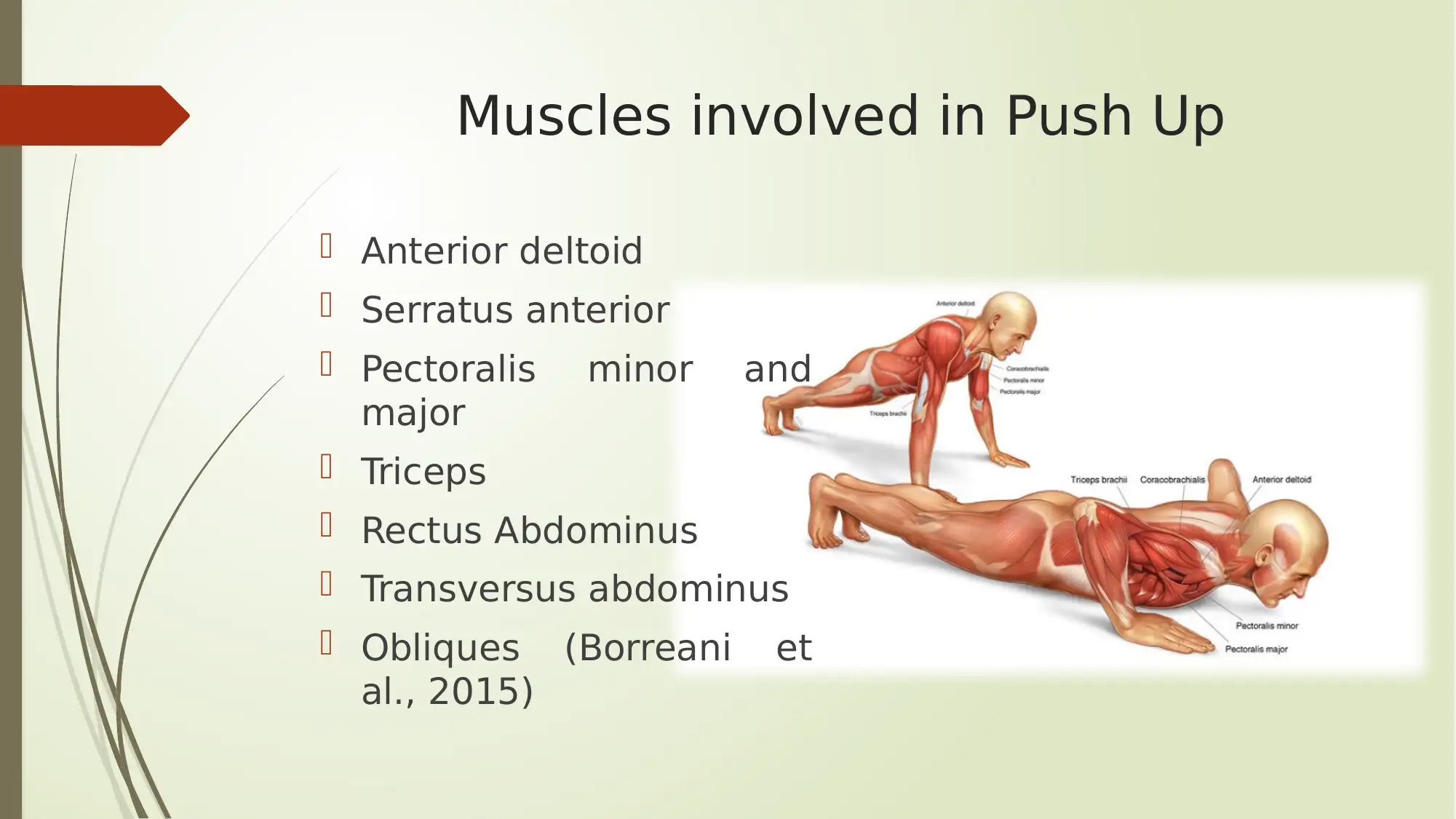
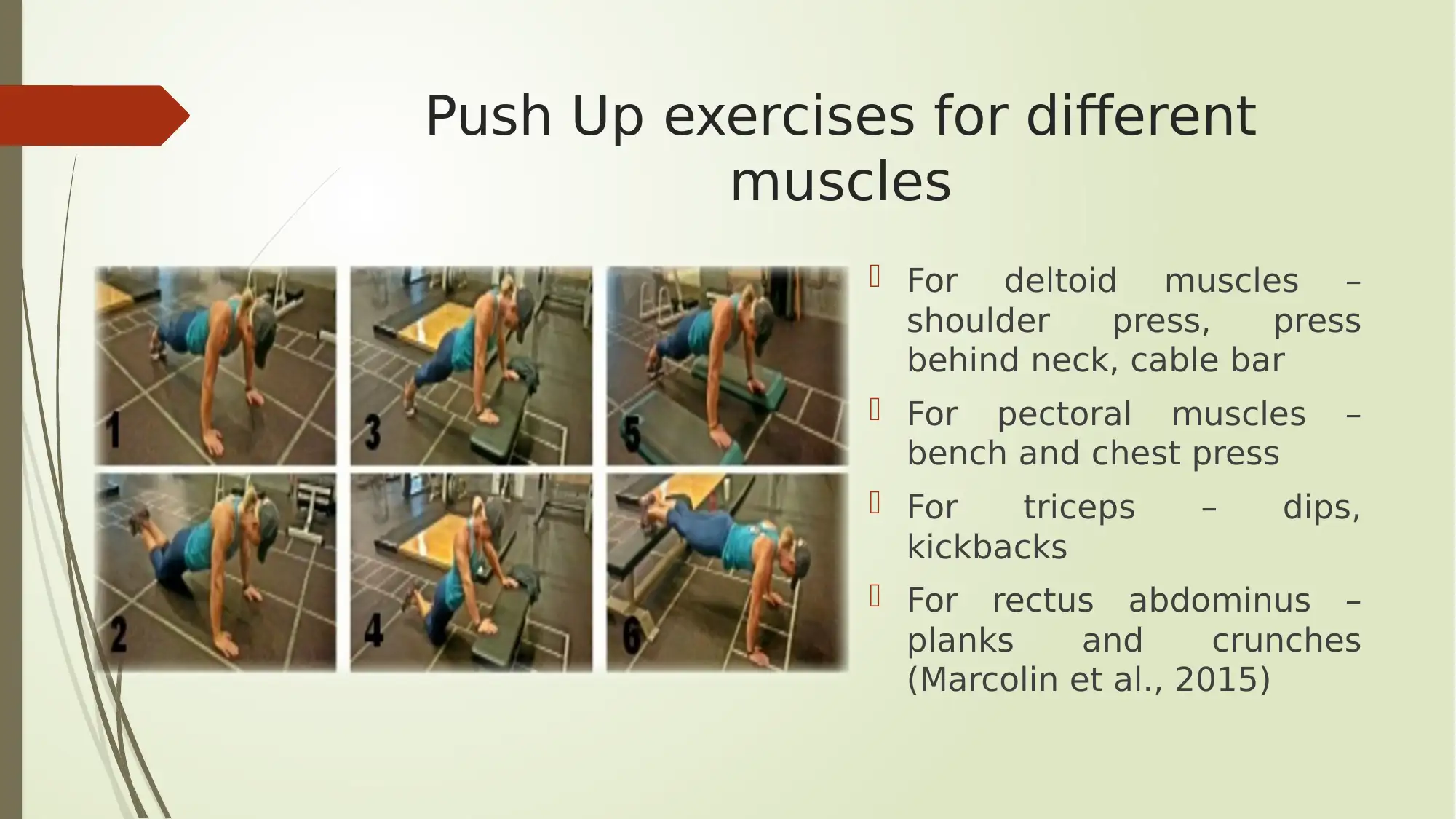
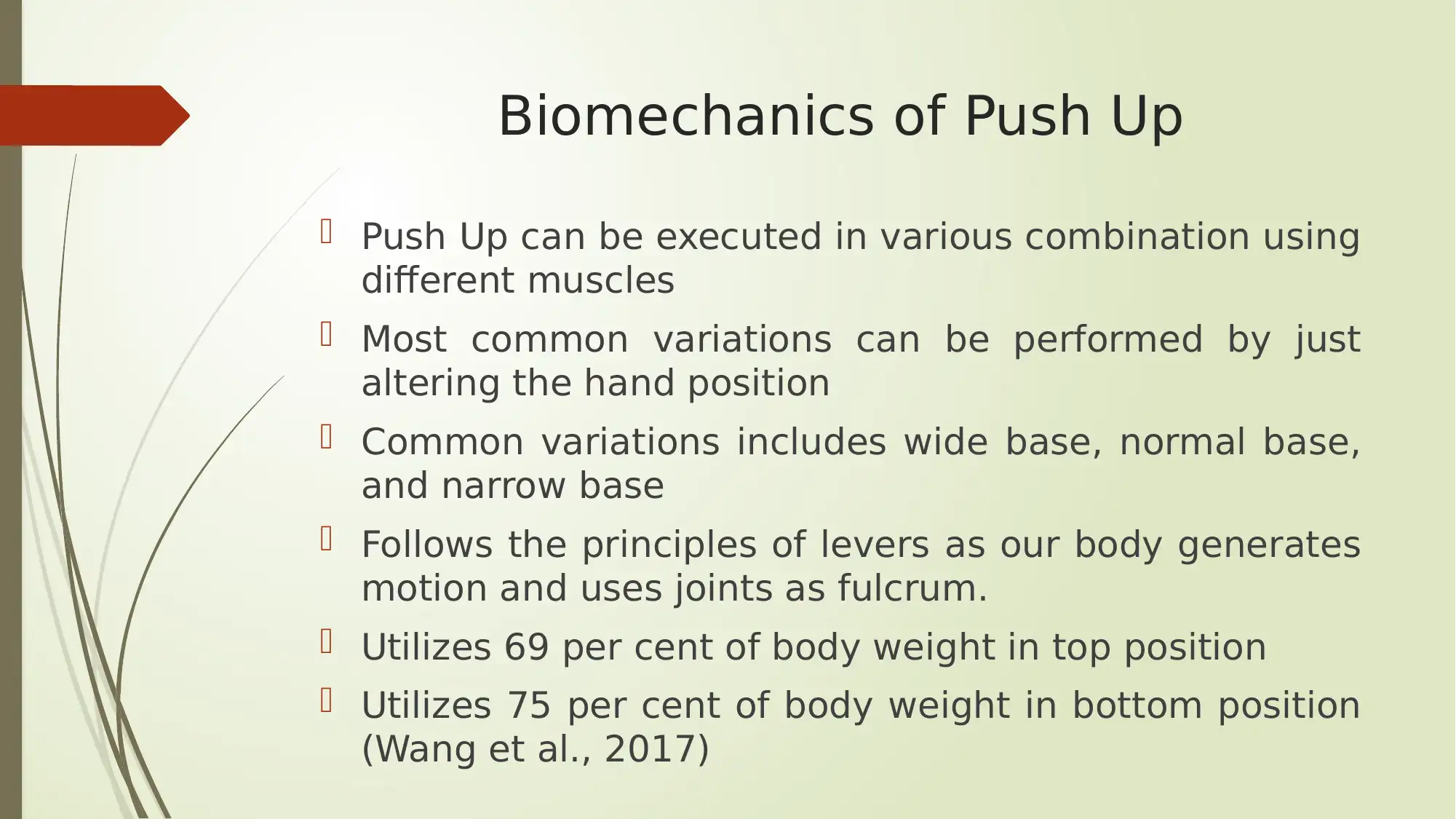
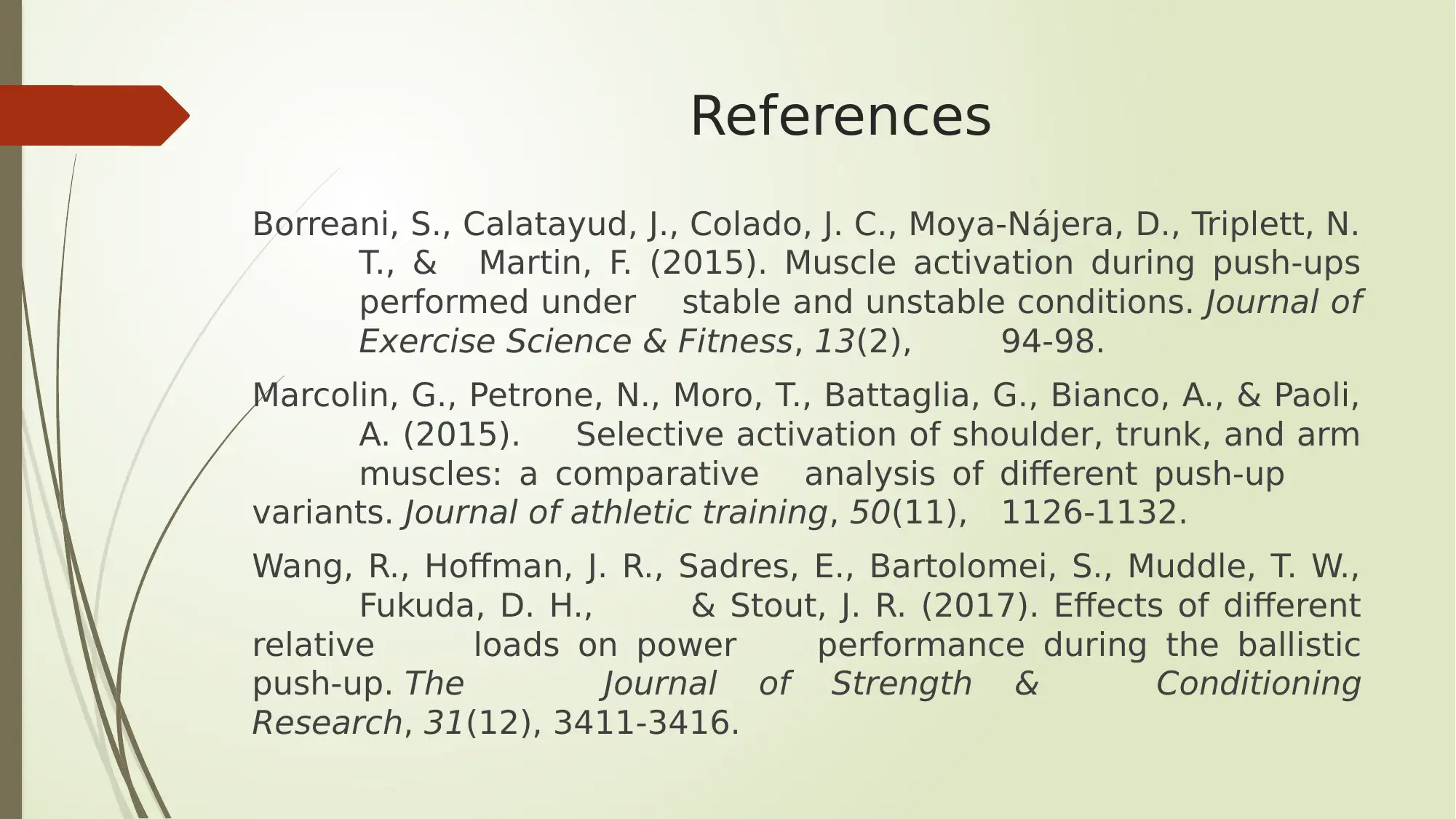







![[object Object]](/_next/static/media/star-bottom.7253800d.svg)